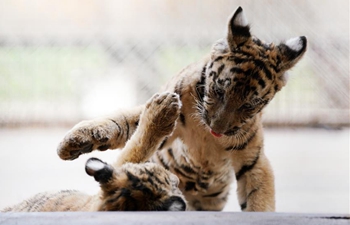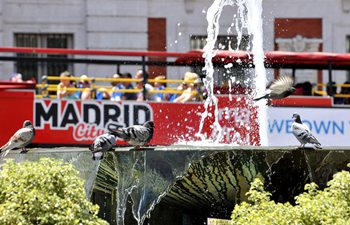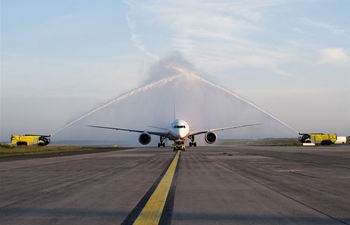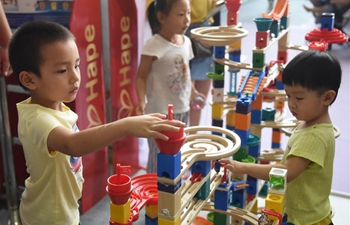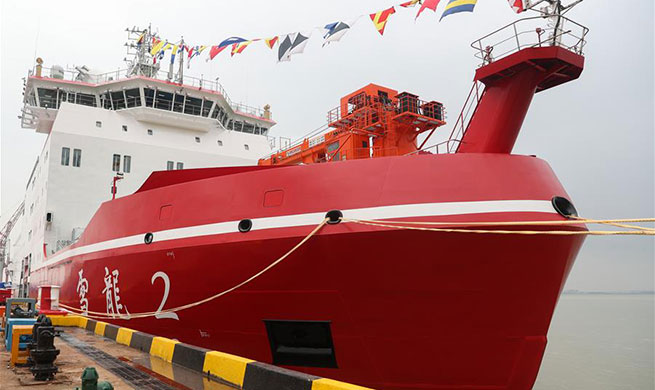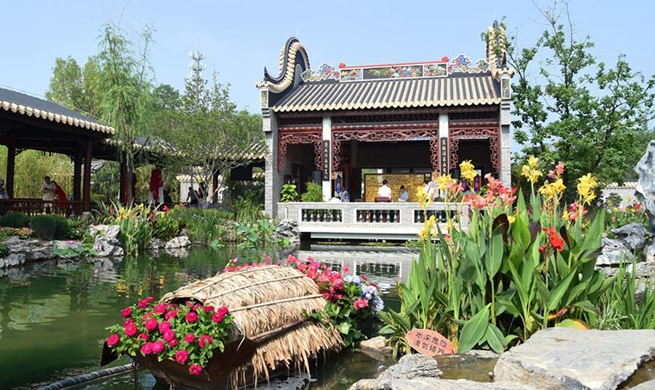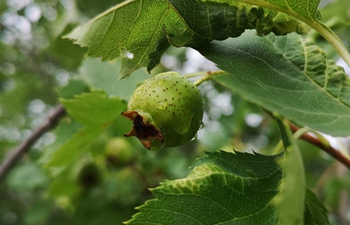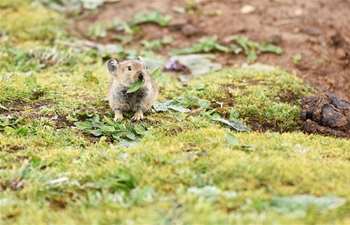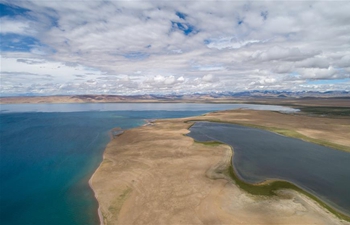TOKYO, July 11 (Xinhua) -- The space probe Hayabusa2 successfully touched down for the second time on the asteroid Ryugu, the Japan Aerospace Exploration Agency (JAXA) said Thursday, adding that it believes subsurface samples have been collected for the first-ever time.
The successful touch down is the second for the space probe, and JAXA said it began its descent to Ryugu on Wednesday morning from an altitude of 20,000 meters.
After analyzing data sent by the probe, JAXA said just before 11:00 a.m. local time that Hayabusa2 had touched down successfully.
Its final descent to the asteroid from a height of 30 meters was made while the probe was on autonomous mode.
Due to there being a 14 minute delay to transmit information between Earth and the space probe, technicians and engineers were on tenterhooks as the probe made its final autonomous approach to the asteroid's surface.
Around 80 JAXA engineers controlling and tracking the mission from the control center in Sagamihara City, near Tokyo, burst into applause upon seeing the data that confirmed the probe's successful landing.
"The landing was a huge success as Hayabusa2 made a perfect move almost in line with our expectations," said Takashi Kubota, a professor at the agency's Institute of Space and Astronautical Science, in Sagamihara.
Project manager Yuichi Tsuda stated from the mission control room that the touchdown was a success, and that the event "marked a new chapter in history."
The probe during its second visit to Ryugu after touching down on its targeted area, which measured just 7 meters in width, attached the end of a cylindrical container to the surface of the asteroid and fired a small projectile from it and "sucked" up the debris from the subsurface of the asteroid as it floated up the container.
The probe will also collect rock samples from underground that were fragmented when the probe first fired a projectile making an artificial crater in April, JAXA said.
In February, Hayabusa2 successfully made its first landing on Ryugu and collected rock samples, JAXA said.
The initial touchdown on the asteroid was postponed from October last year, as JAXA found the surface of the asteroid, which at the time was about 300 million km from Earth and 900 meters in diameter, to be rockier than it first thought and needed more time to ensure the safe landing of the probe.
The Hayabusa2 space probe arrived above the asteroid in June last year.
On Oct. 3, Hayabusa2 released a small-sized Mobile Asteroid Surface Scout, also known as MASCOT, jointly developed by the German and French space agencies, which touched down successfully on the asteroid.
Prior to that, two small robotic rovers also launched from Hayabusa2 successfully landed on Ryugu on Sept. 22, JAXA confirmed.
The rovers have been taking images of the asteroid and performing other functions such as measuring its surface temperature.
JAXA said the images of Ryugu captured by the robots initially revealed a cluster of bumpy rocks and a lack of flat surfaces for the main probe to land on.
The agency since located a flat area near Ryugu's equator that is free of rocks larger than 60 centimeters.
The scientists, according to JAXA's data, apparently successfully landed the probe on a far smaller landing area than originally planned.
The initial landing zone near the equator was just six meters in diameter, JAXA said.
The 600-kg Hayabusa2, which was launched from the Tanegashima Space Center in southwestern Japan on Dec. 2014, has experienced no problems, up until now, throughout its journey totaling 3.2 billion km.
The agency said that in total, Hayabusa2 is scheduled to make three landings on the asteroid and collect rock samples and will stay close to Ryugu for one and a half years.
Hayabusa2's mission will be completed when it returns to earth in 2020 with the samples of rocks it has collected from Ryugu, which are thought to contain water and other materials that could possibly support life.
